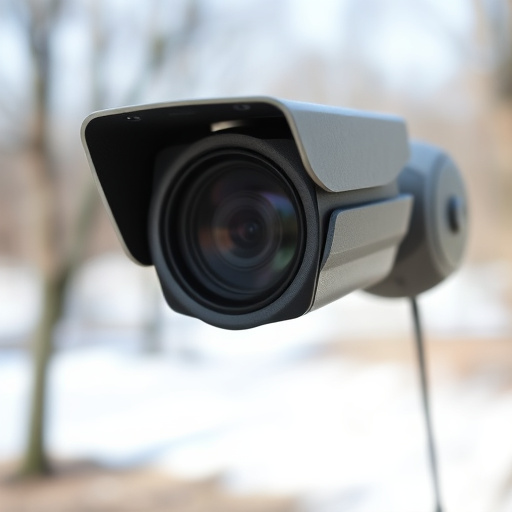Wireless Spy Camera Phone Apps are gaining popularity for covert recording, offering limited functionality but raising legal and privacy concerns. These apps require minimal permission, operate via wireless connection between two phones, and should be used with caution due to unauthorized recording issues. Advanced algorithms and sensors in these apps help detect hidden cameras in real-time, making them valuable for safeguarding personal spaces. However, their widespread use sparks debates about privacy and legality, with strict laws against recording conversations without consent in many regions. Users must be aware of ethical and legal limits to avoid illegal activities.
Uncover the intricate world of covert recording equipment placement and detection with our comprehensive guide. Learn how a simple Wireless Spy Camera Phone App can transform your smartphone into a surveillance tool, empowering you to identify common hidden camera locations and employ advanced detection methods. We’ll also explore legal implications and address privacy concerns surrounding these practices.
- Understanding Wireless Spy Camera Phone App Basics
- Identifying Common Covert Recording Equipment Placement
- Advanced Detection Methods for Spy Cameras
- Legal Implications and Privacy Concerns with Covert Recordings
Understanding Wireless Spy Camera Phone App Basics
Wireless Spy Camera Phone Apps have become a popular tool for covert recording, allowing users to capture video and audio from their mobile devices discreetly. These apps operate by utilizing the phone’s camera and microphone, often with minimal permission requirements, making them easily accessible for surveillance purposes. The basic functionality involves installing the app on both the target device and the user’s smartphone, creating a wireless connection between them. Once paired, users can remotely access live feeds, record videos, and even capture still images from their phone without the knowledge of the person being monitored.
The simplicity and convenience of these apps make them a game-changer for those seeking covert recording solutions. However, it’s crucial to be aware that many of these applications have limited capabilities and may not offer the same level of quality or functionality as dedicated surveillance equipment. Additionally, legal considerations and privacy concerns surrounding their use should not be overlooked, as unauthorized recording can have serious implications.
Identifying Common Covert Recording Equipment Placement
Identifying common covert recording equipment placement is crucial in today’s digital era, where wireless spy camera phone apps have made it easier than ever for unauthorized surveillance to occur. Scrutinizing spaces for potential hidden cameras or microphones requires a keen eye and an understanding of where these devices are most likely to be installed.
High-traffic areas like offices, homes, and public spaces often see covert recording equipment tucked away in seemingly innocuous places. Look for small openings or crevices that might accommodate a tiny camera lens or microphone, such as behind pictures on walls, under furniture, or inside light fixtures. Additionally, devices can be disguised as everyday objects like smoke detectors, clock radios, or even pen drives, making them nearly impossible to detect without thorough inspection.
Advanced Detection Methods for Spy Cameras
The evolution of technology has introduced sophisticated methods for detecting covert recording devices, particularly wireless spy cameras. One of the most effective tools in this regard is the use of specialized detection apps and software that can identify and locate hidden cameras. These applications utilize advanced algorithms and sensors to scan for unique signals emitted by spy cameras, making them indispensable for privacy protection.
Wireless Spy Camera Phone Apps are designed to be user-friendly, allowing individuals to proactively safeguard their personal spaces. By simply installing such an app on a smartphone or tablet, users can perform real-time scans and detect even the most discreetly placed recording devices. This technology is particularly valuable in high-risk areas like homes, offices, and public spaces, ensuring that sensitive information remains secure from prying eyes.
Legal Implications and Privacy Concerns with Covert Recordings
The use of covert recording equipment, facilitated by modern technology like wireless spy camera phone apps, raises significant legal and privacy concerns. In many jurisdictions, wiretapping or surreptitiously recording conversations without all parties’ consent is illegal and considered a violation of civil liberties. The placement of these hidden devices in public or private spaces can infringe upon individuals’ right to privacy, leading to potential legal repercussions for the recorders.
Privacy laws vary across regions, but generally, any form of surveillance that intrudes upon an individual’s personal space or captures sensitive information without their knowledge is frowned upon. With wireless spy camera phone apps becoming increasingly accessible, it’s crucial for users to understand the ethical and legal boundaries surrounding covert recording to ensure they do not inadvertently engage in illegal activities.
The world of covert recording equipment has evolved significantly with advancements in technology, particularly through Wireless Spy Camera Phone Apps. Understanding basic app functionalities, recognizing common placement locations, and employing advanced detection methods are essential steps in navigating this complex landscape. While these tools offer valuable insights, it’s crucial to be aware of legal implications and privacy concerns surrounding their use. By staying informed and adopting responsible practices, individuals can protect their privacy and ensure ethical utilization of covert recording technologies.
